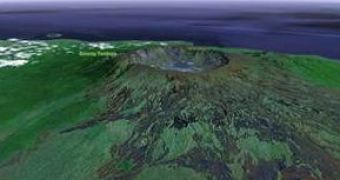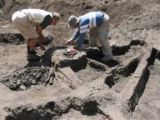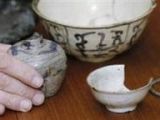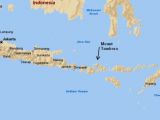On April 10, 1815, took place the largest volcanic eruption in human history. Mount Tambora on the Indonesian island of Sumbawa ejected up to 100 cubic kilometers of magma and pulverized rock, and it spewed ash and 400 million tons of sulfurous gases 44 kilometers into the atmosphere. The gases that lingered in the atmosphere caused a year of global cooling in 1816 that is now known as "the year without a summer". The effects were felt worldwide: in France and Germany, grape and corn crops died, and crops in Maine suffered frosts in June, July and August.
However, the local effects were more tremendous. The volcano literally wiped out the local civilization killing around 100 000 people by burying them under ash. The Tambora civilization had just been discovered by Dutch and British explorers who visited the Sumbawa Island in the early 1800s. According to Professor Haraldur Sigurdsson, who has now unearthed the remnants of this civilization, the explorers were surprised to hear a language that didn't sound like any other spoken in Indonesia. However, "the explosion wiped out the language. That's how big it was," Sigurdsson said. "But we're trying to get these people to speak again, by digging."
Using radar, the US and Indonesian researchers have managed to find a village preserved in the same manner as the Roman town of Pompeii, which was destroyed by Vesuvius' eruption. "All the people, their houses and culture are still encapsulated there as they were in 1815. It's important that we keep that capsule intact and open it very carefully.", said Sigurdsson
The researchers found the carbonized bones of two people as well as the remains of a thatch house, bronze bowls, ceramic pots, iron tools and other artifacts, all in a layer of sediment dating to the eruption. Sigurdsson said that the Tamborans were "not poor people at all. They were actually quite well off." Historical evidence also supports this, as Tamborans have been famous in the East Indies for their honey, horses, sappan wood for producing red dye, and sandalwood used for incense and medications.
The village has been 5 kilometers inland and Sigurdsson believes that this is because residents feared pirates who often snatched costal residents and turned them into slaves. The inhabitants were most likely farmers.
In regard to the Tamboran culture some scientists, including Sigurdsson, believe that it was linked to Vietnam and Cambodia, and that the Tamboran language was related to that of the Mon-Khmer group of languages that are now scattered across Southeast Asia. This is supported by the similarities with the pottery commonly found in Vietnam.
However, other scientists such as John Miksic, an archaeologist at the National University of Singapore, disagree. Miksic doubts Tamborans were from Indochina or spoke a language from that area and thinks it's more likely that Vietnamese-style ceramics have reached the island through trade with intermediaries.
Sigurdsson is best known for his studies of the eruption of Mount Vesuvius that wiped out the Roman cities of Pompeii and Herculaneum. He also discovered in 1991 in Haiti tektite glass spherules proving the world wide impact of the asteroid that presumably caused the extinction of the dinosaurs.
Photo Credits: University of Rhode Island. Map created with MapQuest

 14 DAY TRIAL //
14 DAY TRIAL // 


